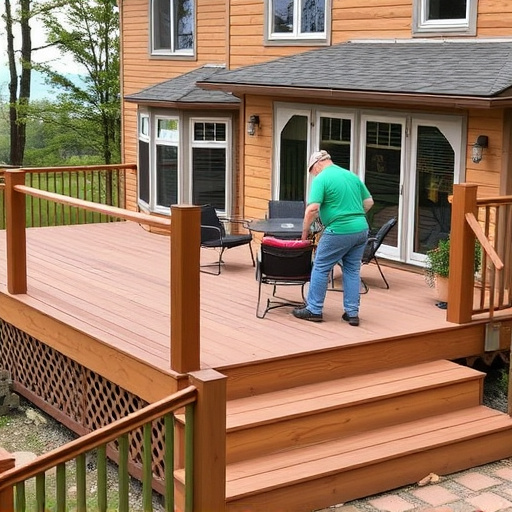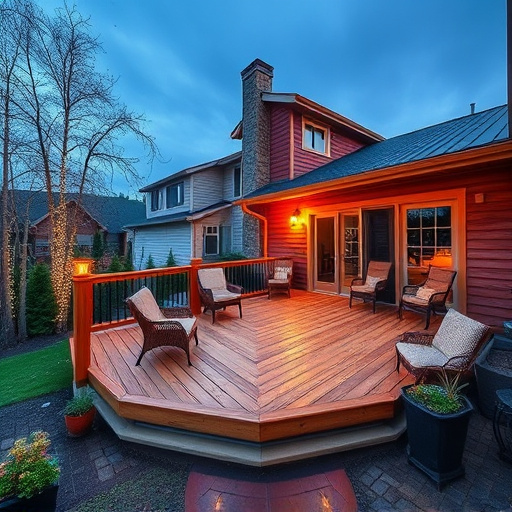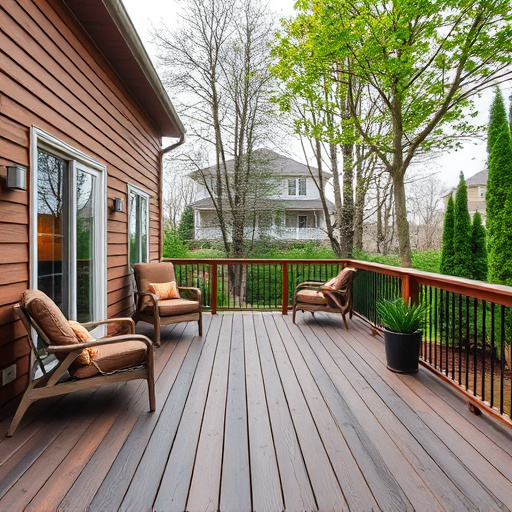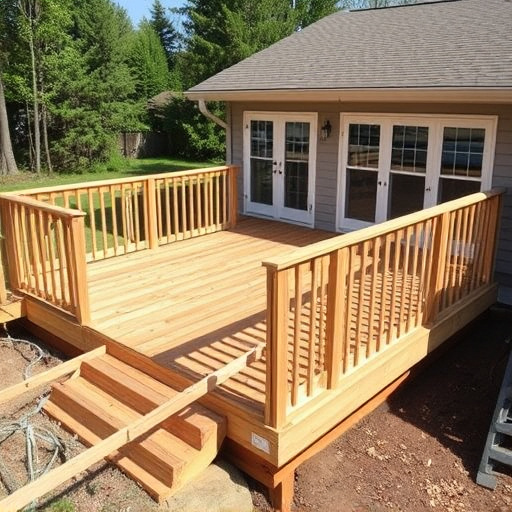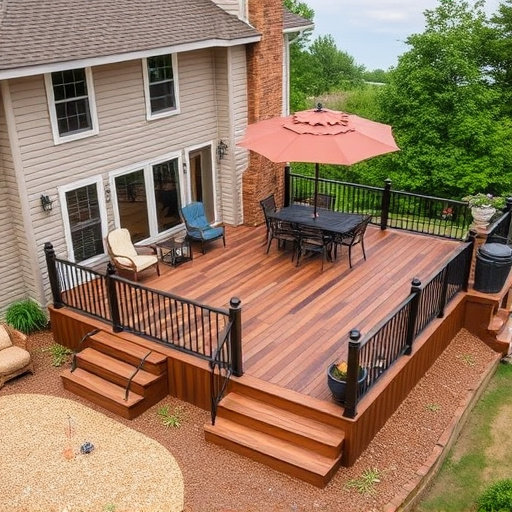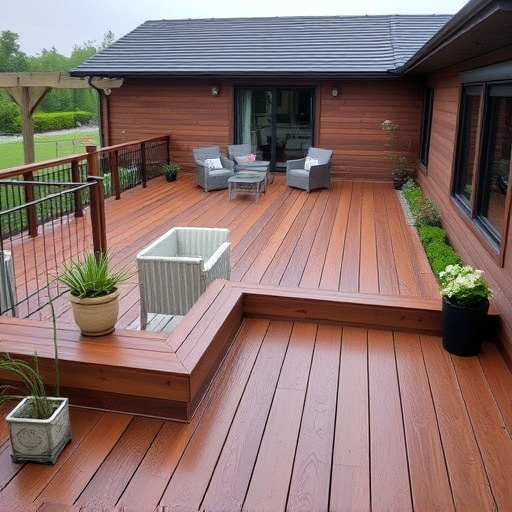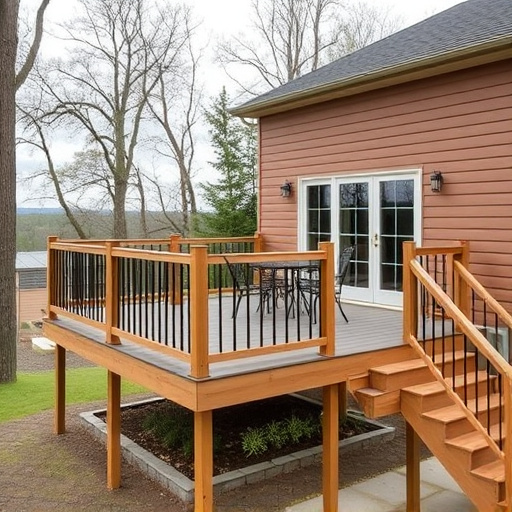Before starting deck framing, measure area dimensions and consider design elements. Sketch a plan and choose between platform or complex railing styles for material estimation. Post spacing ranges 16-24 inches on center for residential decks, determined by span and building codes. Calculate joist length, refer to guidelines for fastener placement, and account for installation wastage for accurate deck framing material use.
“Looking to build a new deck? Understanding how to calculate materials needed for deck framing is crucial for any DIY project. This comprehensive guide breaks down the process into simple steps. First, determine your deck’s size and shape. Next, calculate post spacing and quantity for sturdy support. Then, estimate lumber requirements and fastener needs. By following these steps, you’ll be well-prepared to tackle your deck framing project with confidence.”
- Determine Deck Size and Shape
- Calculate Post Spacing and Quantity
- Estimate Lumber and Fastener Requirements
Determine Deck Size and Shape

Before calculating the materials needed for deck framing, it’s crucial to determine the size and shape of your desired deck. Start by measuring the length and width of the area where the deck will be built. The deck’s dimensions will directly impact the amount of material required. For instance, if you’re building a rectangular deck, measure both the long sides and short sides accurately. Once you have these measurements, you can easily sketch out a rough plan to visualize the layout.
Consider factors like overhangs, stairs, or any unique design elements that might affect the overall shape. In addition to size, think about the style of your deck—will it be a simple platform or include complex railings and supports? Different designs call for varying amounts of materials, including lumber, nails, screws, and connectors. Identifying these requirements early on will ensure a smoother building process and help you accurately estimate the cost of your deck framing project, whether it’s for a residential or even commercial siding application.
Calculate Post Spacing and Quantity

When designing your deck framing, one crucial aspect to consider is the spacing and quantity of posts. The post spacing depends on several factors including the deck’s size, span, and local building codes. Generally, for residential decks, post spacing varies between 16 to 24 inches (40 to 60 cm) on center. This measurement refers to the distance between each support post, running along the length of your deck frame.
To determine the required quantity, calculate the total span of your deck and refer to engineering calculations or local building codes for recommended post spacing. For instance, if your deck has a 10-foot (3 meter) span, and you’re using 24-inch (60 cm) spacing, you’ll need approximately four posts to support the structure effectively. This is just a basic guideline; always consult with home exterior services professionals or refer to trusted home service solutions for precise calculations tailored to your specific deck framing project, ensuring structural integrity and safety, especially for longer spans or heavier loads, such as those requiring roof repair.
Estimate Lumber and Fastener Requirements

When planning your deck framing project, accurately estimating the lumber and fastener requirements is paramount. The quantity of materials needed will largely depend on the size and design of your deck. Start by calculating the linear feet of joists required, considering the length and span of your deck. For instance, if you’re installing 2×6 joists over a 10-foot span, you’ll need to account for end cuts and determine the total linear footage.
Once you have this measurement, consult manufacturer guidelines or industry standards to estimate the number of fasteners needed. This includes nails or screws for joist connections, beam platings, and any additional structural elements. Remember to factor in potential wastage during installation. Proper estimation ensures a solid foundation for your deck framing, aligning with best practices for residential siding, roofing, and gutters—ensuring both durability and safety.
Calculating the materials needed for deck framing is a crucial step in any DIY project. By determining your deck’s size, shape, and spacing requirements, you can efficiently estimate the lumber and fastener quantities. This ensures that your deck construction goes smoothly and stays within budget. Remember to factor in additional measures for waste and adjustments during the building process. With these calculations, you’re well-equipped to handle any deck framing challenge, making your outdoor oasis a reality.








